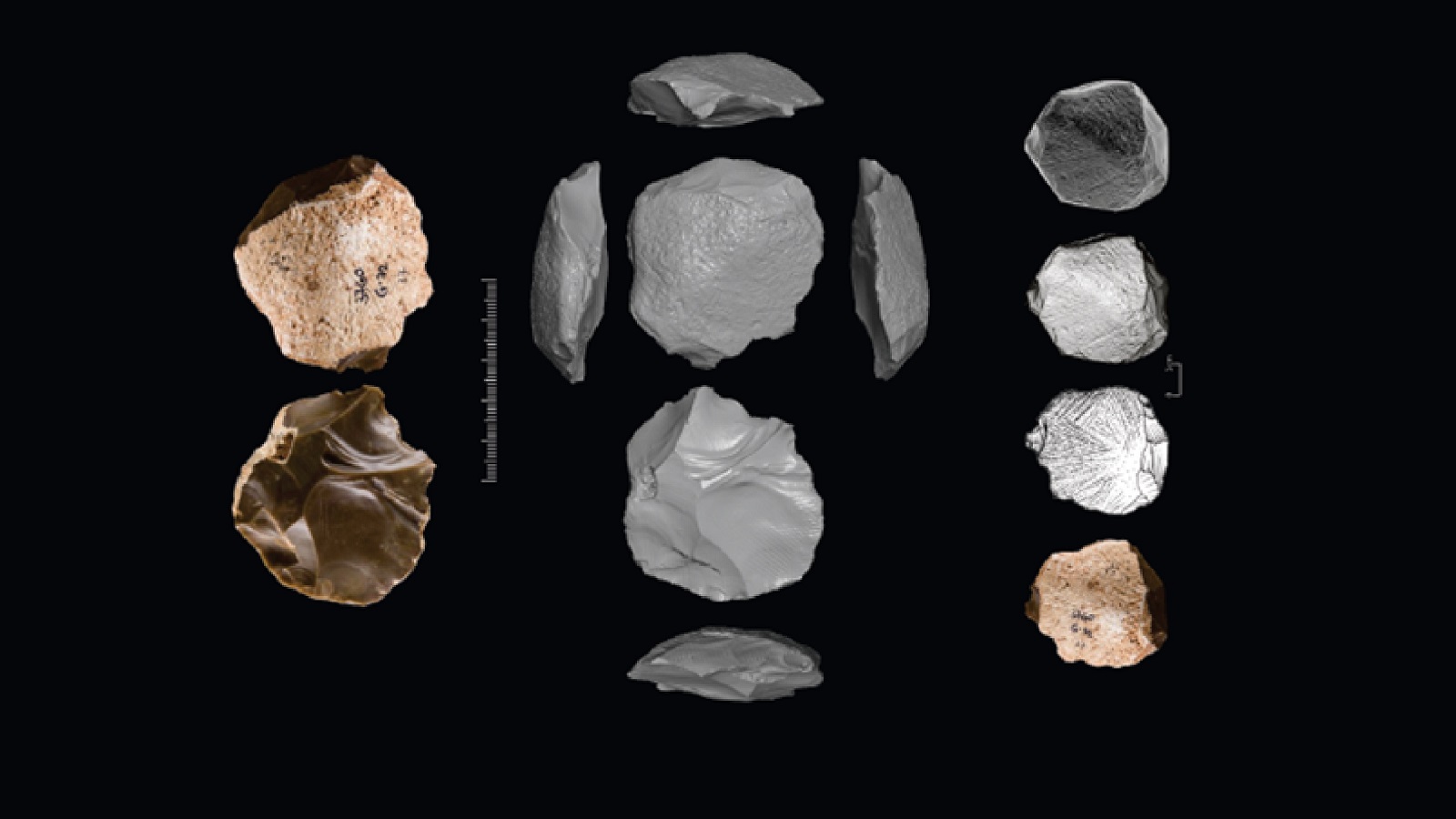Ancient Engravings in Israel May Be Evidence of Early Abstract Thinking
A groundbreaking study has uncovered compelling evidence that early humans in the Levant engaged in symbolic behavior much earlier than previously believed. Researchers from Israel, Germany, the US, and Portugal examined carved stone artifacts from Middle Paleolithic sites, finding deliberate geometric engravings that suggest early conceptual and artistic thought. The Hebrew University of Jerusalem announced the findings on Wednesday following their publication in Archaeological and Anthropological Sciences.
Led by Dr. Mae Goder-Goldberger (Hebrew University and Ben Gurion University) and Dr. João Marreiros (Monrepos Archaeological Research Center and Museum for Human Behavioral Evolution, LEIZA, and ICArEHB, University of Algarve), in collaboration with Professor Erella Hovers (Hebrew University) and Dr. Eduardo Paixão (ICArEHB, University of Algarve), the study examined artifacts from Manot Cave, Qafzeh Cave, Quneitra, and Amud Cave, dating back between 100,000 and 40,000 years ago.
Using advanced 3D surface analysis, researchers distinguished engravings with geometric patterns from functional marks created through everyday tool use. Artifacts from Qafzeh Cave, estimated to be 100,000 to 90,000 years old, featured deliberate engravings associated with early modern humans, making them among the oldest known examples of symbolic behavior in the Levant. Similarly, objects from Quneitra, roughly 54,000 years old, and Manot Cave, dating to 50,000 to 40,000 years ago, revealed structured patterns aligning with the stones’ natural surfaces, reinforcing their aesthetic and symbolic intent.
This holiday season, give to:
Truth and understanding
The Media Line's intrepid correspondents are in Israel, Gaza, Lebanon, Syria and Pakistan providing first-person reporting.
They all said they cover it.
We see it.
We report with just one agenda: the truth.


In contrast, markings found at Amud Cave, which dates to approximately 70,000 to 50,000 years ago and is associated primarily with Neanderthal occupation, consisted of shallow, unpatterned incisions consistent with functional use, such as abrasion.
“Abstract thinking is a cornerstone of human cognitive evolution. The deliberate engravings found on these artifacts highlight the capacity for symbolic expression and suggest a society with advanced conceptual abilities,” Goder-Goldberger said.
Traditionally, scholars believed that symbolic behavior—often linked to abstract thinking and cultural sophistication—only emerged much later in human evolution with modern Homo sapiens. This study challenges that perspective, presenting some of the earliest known examples of intentional engravings.
Marreiros noted that the methodology used in this research “not only highlights the intentional nature of these engravings but also provides for the first time a comparative framework for studying similar artifacts, enriching our understanding of Middle Paleolithic societies.”
The findings add to growing evidence that early human populations had a more advanced level of cognitive development than previously thought, bridging the gap between functional tool use and abstract expression.

